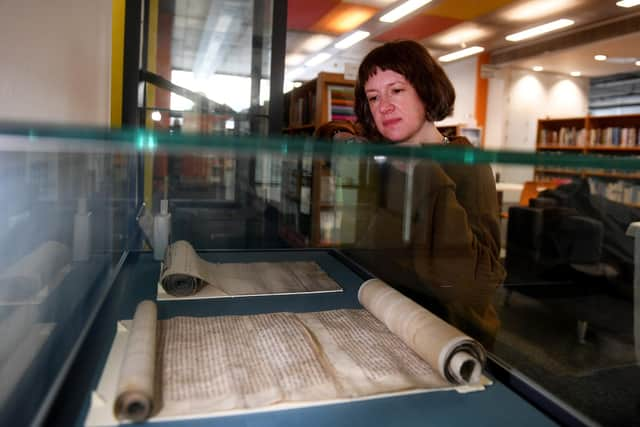The curious tale of the Yorkshire island which disappeared beneath the sea after 130 years
Ravenser Odd, an island somewhere near Spurn, slipped under the waves centuries ago, as have numerous now-forgotten villages along Europe's fastest eroding coastline.
At the height of its fortunes in the early 14th century, it supplied the king with two ships and armed men to help him fight the Scots.
Advertisement
Hide AdAdvertisement
Hide AdBut by 1360, the entire place – which only rose from the sea the previous century - was gone, the floods washing out even the bodies buried in the town graveyard.


Both Ravenser – from Old Norse hrafn’s eyr (raven’s tongue) and Hull gained their charters from Edward I the same day – April 1 1299 – Hull showing rather more longevity, although still precarious as the second urban area most at risk of flooding outside London.
Now to mark the 725th anniversary the original town charters held at The National Archives are going on display for the first time outside of London at Hull History Centre.
City Archivist Martin Taylor said: "We are the ones who survived. If Ravenser hadn’t fallen into the sea East Yorkshire would be very different and Hull, perhaps, would be a swamp.” Since the Roman era, historians have documented dozens of hamlets and villages along the East Coast which have succumbed to the North Sea. The best known account of these lost towns and villages was written by Thomas Sheppard in 1912, who used old accounts and map drawings to figure out the rough locations of settlements claimed by the sea.
Advertisement
Hide AdAdvertisement
Hide AdHowever people still don’t know whether Ravenser Odd was to the seaward side of Spurn or within the Humber – a sonar survey by academics at the University of Hull in 2022 failed to locate the town.


It may never be found. In 1959 Spurn’s owner the War Office offered the Deserted Medieval Village Research Group a chance to look for it, but they turned it down as they wouldn’t know where to start.
Dr Emily Robinson, from the University of Sussex, grew up near Hull but only read about Ravenser Odd in a Guardian article in 2017. She is now writing a book about a subject, she admits is niche, but has a cult following, inspiring poetry, musicians, role play and computer games. She said: “It had 130 years of life at most. Throughout the 1340s and 50s they were fighting a losing battle, asking for flood defences and exemptions from taxes. One woman had 145 houses lost in a storm.
"They described it as being annihilated by the sea. There was a big storm in 1362 across the North Sea coast which killed tens of thousands of people. But we think by then it had already been abandoned.”
Dr Robinson will give a free talk with Dr Kathryn Maude, from The National Archives, about the history and folklore of Ravenser Odd on Tuesday April 9, at 12.30pm, at the centre.
